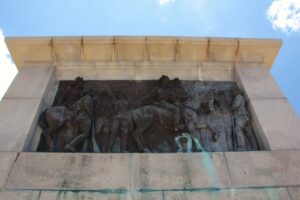Gedeo Cultural Landscape: A Journey Through Ethiopia’s Living Heritage
Nestled in the lush highlands of southern Ethiopia, the Gedeo Cultural Landscape is a captivating tapestry of natural beauty and cultural richness. Recognized as a UNESCO World Heritage Site, this area is a testament to the harmonious relationship between the Gedeo people and their environment. With its terraced hills, vibrant communities, and rich traditions, the Gedeo Cultural Landscape offers a unique glimpse into a way of life that has been sustained for centuries.
What to See
The Gedeo Cultural Landscape is renowned for its stunning terraced hillsides, which are a marvel of traditional agricultural practices. These terraces, meticulously carved into the landscape, are used to cultivate a variety of crops, including coffee, enset (false banana), and various fruits and vegetables. As you explore the area, you’ll be greeted by the sight of lush greenery and the sound of birds chirping, creating a serene and picturesque environment.
In addition to the terraces, visitors can explore the vibrant local markets, where the Gedeo people sell their produce and handmade crafts. These markets are a great place to experience the local culture and perhaps pick up a unique souvenir. The Gedeo Cultural Landscape is also home to several sacred sites and traditional ceremonies, offering a deeper understanding of the spiritual and cultural practices of the Gedeo people.
A Bit of History and Interesting Facts
The Gedeo people have inhabited this region for centuries, developing a unique system of agriculture that has allowed them to thrive in a challenging environment. The terraced farming techniques used by the Gedeo are believed to have been developed over 2,000 years ago, showcasing their deep understanding of sustainable land management.
One interesting fact about the Gedeo Cultural Landscape is its role in the global coffee industry. The region is part of the Ethiopian coffee belt, and the Gedeo people have been cultivating coffee for generations. The coffee grown here is known for its rich flavor and is highly sought after by coffee enthusiasts worldwide.
The Gedeo Cultural Landscape was inscribed as a UNESCO World Heritage Site in 2018, recognizing its outstanding universal value as a living cultural landscape. This designation highlights the importance of preserving the traditional practices and natural beauty of the area for future generations.
How to Get There and Tips for First-Time Visitors
Reaching the Gedeo Cultural Landscape is relatively straightforward. The nearest major city is Dilla, which is accessible by road from Addis Ababa, the capital of Ethiopia. The journey takes approximately 5 to 6 hours by car or bus, offering a scenic drive through the Ethiopian countryside.
For first-time visitors, it’s advisable to hire a local guide who can provide insights into the cultural and historical significance of the area. Guides can also help navigate the terrain and ensure a more enriching experience. It’s important to respect local customs and traditions, so dressing modestly and seeking permission before taking photographs of people or sacred sites is recommended.
Accommodations in the area range from basic guesthouses to more comfortable lodges, providing options for different budgets. It’s a good idea to book in advance, especially during peak tourist seasons.
The Gedeo Cultural Landscape is a hidden gem that offers a unique blend of natural beauty and cultural heritage. Whether you’re a history enthusiast, a nature lover, or simply looking to experience a different way of life, this UNESCO World Heritage Site promises an unforgettable journey.








